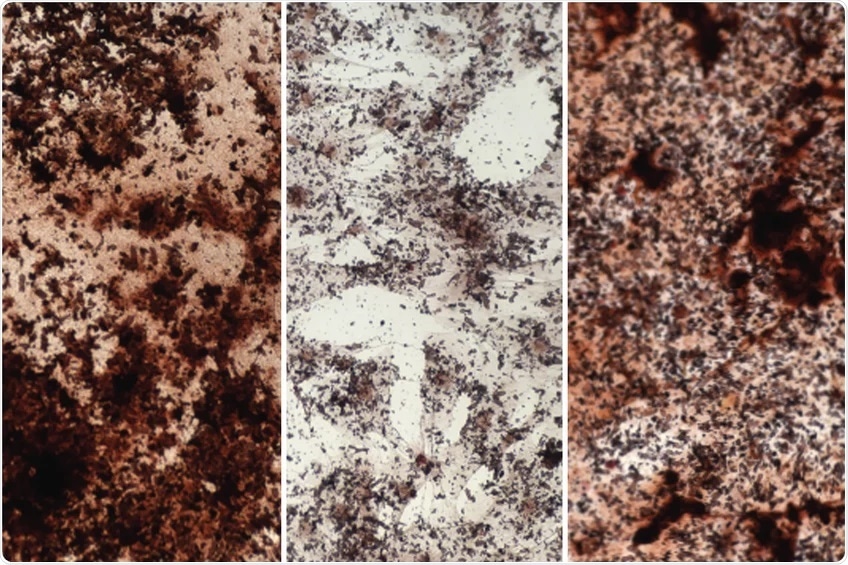The bones become thinner with age, resulting in frequent fractures and making them susceptible to bone diseases like osteoporosis. This is caused by a response mechanism that involves the impaired function of the bone marrow stem cells, required for the maintenance of bone integrity.

Stained calcium (dark brown) in stem cells from the bone marrow: Young stem cells (left) produce more material for bone than old stem cells (center). They can be rejuvenated by adding sodium acetate (right). Image Credit: © Pouikli/Max Planck Institute for Biology of Ageing.
Scientists from the Max Planck Institute for Biology of Ageing and the CECAD Cluster of Excellence for Ageing Research at the University of Cologne have revealed that the decreased stem cell function during aging is because of the changes in their epigenome. The researchers reversed these changes in isolated stem cells by adding acetate. This fountain of youth for the epigenome can become vital for the treatment of diseases like osteoporosis.
Aging researchers speculate epigenetics as a reason for aging processes. Epigenetics involves the study of alterations in genetic information and chromosomes that do not change the gene sequence themselves but affect their activity. A likelihood is alterations in proteins known as histones, which package the DNA in the cells thereby controlling accessibility to DNA.
The Cologne research team of Peter Tessarz recently analyzed the epigenome of mesenchymal stem cells. These stem cells are identified in the bone marrow and can produce various kinds of cells like bone, cartilage, and fat cells.
We wanted to know why these stem cells produce less material for the development and maintenance of bones as we age, causing more and more fat to accumulate in the bone marrow. To do this, we compared the epigenome of stem cells from young and old mice. We could see that the epigenome changes significantly with age. Genes that are important for bone production are particularly affected.”
Andromachi Pouikli, Study First Author, Max Planck Institute for Biology of Ageing
Rejuvenation of the epigenome
The scientists later analyzed if the epigenome of stem cells can be rejuvenated. To find this, they treated isolated stem cells from mouse bone marrow with a nutrient solution containing sodium acetate. The cell converted the acetate into a building block that enzymes can bind to histones to heighten accessibility to genes, thus enhancing their activity.
This treatment impressively caused the epigenome to rejuvenate, improving stem cell activity and leading to higher production of bone cells.”
Andromachi Pouikli, Study First Author, Max Planck Institute for Biology of Ageing
To explicate if this change in the epigenome is also the reason for heightened risk in old age for bone fractures or osteoporosis in humans, the scientists examined human mesenchymal stem cells from patients after a hip surgery. The cells derived from elderly patients suffering from osteoporosis also displayed similar epigenetic changes as seen earlier in the mice.
A new therapeutic approach against osteoporosis?
Sodium acetate is also available as a food additive, however, it is not advisable to use it in this form against osteoporosis, as our observed effect is very specific to certain cells. However, there are already first experiences with stem cell therapies for osteoporosis. Such treatment with acetate could also work in such a case.”
Peter Tessarz, Max Planck Institute for Biology of Ageing
Peter Tessarz, who led the study, further adds, “However, we still need to investigate in more detail the effects on the whole organism in order to exclude possible risks and side effects.”
Source:
Journal reference:
Pouikli, A., et al. (2021) Chromatin remodeling due to degradation of citrate carrier impairs osteogenesis of aged mesenchymal stem cells. Nature Aging. doi.org/10.1038/s43587-021-00105-8.